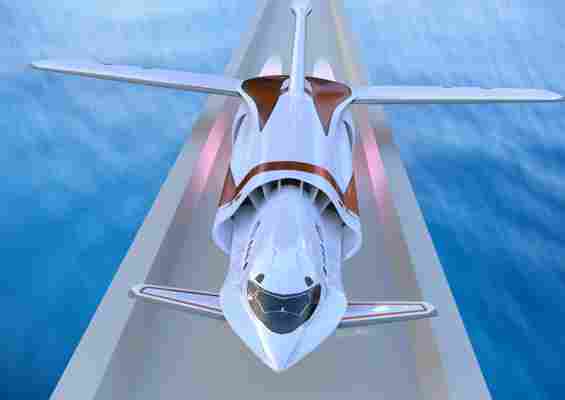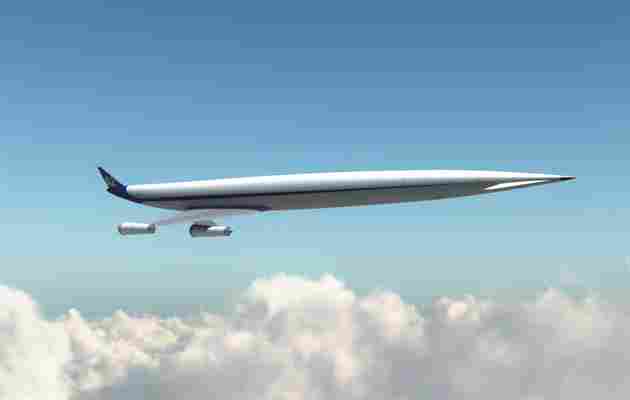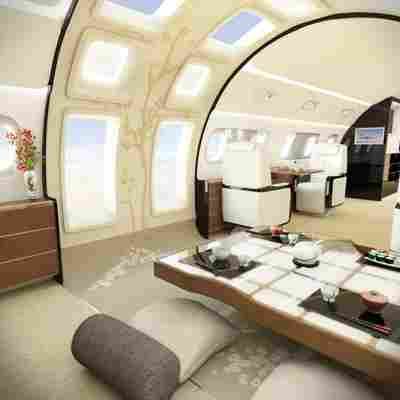October 13,2022
5 Airplanes That Offer a Glimpse into the Future of Travel
by David Stewart
For the past century, the world of aviation has continued to innovate, gaining altitude and speed as new technologies push the boundaries of what is possible. In just this past year, several companies have rolled out plans for air travel that could revolutionize the way we travel across the globe and, in some instances, into space.
Pictured here is the ICON A5, a 23-foot-long, 1,080-pound amphibious aircraft that can hold two people in its 46-inch-wide cockpit. The plane, which can reach up to 110 m.p.h., has a range of 430 miles on a full tank and is intended for short trips. Similar to how convertible cars were meant for enjoying a nice weekend, the A5 was intended for the sheer pleasure of flying one’s own plane. Engineers designed the A5 to be tailspin-resistant so that it would be kept from spiraling to the ground, even in the event of pilot error. The most convenient feature is the A5’s wings, which can be folded back, allowing for easy ground transportation and storage between flights.

The future of air travel for Canadian engineer Charles Bombardier, and his concept supersonic jet, the Skreemr, is one in which planes can fly from New York to London in 30 minutes total. His vision involves a jet that would be shot out of a magnetically charged electric-launch system at gunlike speeds. From there, the 75-passenger craft would ignite liquid oxygen in order to rise in speed and altitude until it was moving at such a rate to successfully compress incoming air for engine combustion, burning hydrogen and compressed oxygen to accelerate to an unbelievable speed of Mach 10, or about 6,600 m.p.h. at 40,000 feet (for comparison, Boeing 747s have a cruising speed of roughly 570 m.p.h.). There are a whole host of extremely difficult issues for Bombardier and his team to figure out before the Skreemr ever leaves the drawing board. For one, the group has to conjure a way to ensure passengers do not pass out from the pressure during takeoff and at the intensely high, mid-flight speeds.

BAE Systems, one of the largest defense contractors in the world, just bought a 20 percent stake in Reaction Engines. Through its $30 million investment, BAE Systems is betting that the small British technology company will be able to shape the future of commercial and space travel by developing a hybrid rocket–jet engine called Sabre (Synergetic Air-Breathing Rocket Engine). If successful, the new technology could lead to low-cost space travel by allowing aircraft to launch into orbit, deploy a satellite, and return to earth for reuse—all within 48 hours. What’s more, the technology has the potential to alter commercial flights by letting passengers venture anywhere around the planet in four hours. Reaction Engines plans to hold a demonstration of its new Sabre technology in 2020.

Embraer is at the forefront of innovation in the world of private jets. The future in that domain could be one in which additional windows ushering more sunlight becomes the new sign of opulence. This rendering shows Embraer’s vice president of interior design Jay Beever’s vision for the next decade of luxury aircrafts. “It’s about windows creating more sunlit space,” says Beever. “Instead of using technology to create a sense of space, we can harness the power of nature by allowing more of it into our cabin.”
Seattle-based Vulcan Aerospace is on the verge of creating the world’s largest airplane. Plans for the Stratolaunch Carrier Aircraft, a dual-fuselage, 28-wheel behemoth that measures more than 380 feet from wingtip to wingtip (roughly 120 feet wider than the Airbus A380), have been in development since 2011. Earlier this year, Vulcan began construction on the plane at the Mojave Air and Space Port in California. Spearheaded by Microsoft cofounder Paul Allen, the new airplane will serve as a research tool and launchpad for a variety of spacecraft. One of the most expensive and challenging parts of sending anything into space is getting it off the ground—literally. The Stratolaunch will take off like a conventional jet (notably in all sorts of weather), ascending to 30,000 feet, launching its payload, and then landing. Vulcan hopes to begin test flights in 2016.






